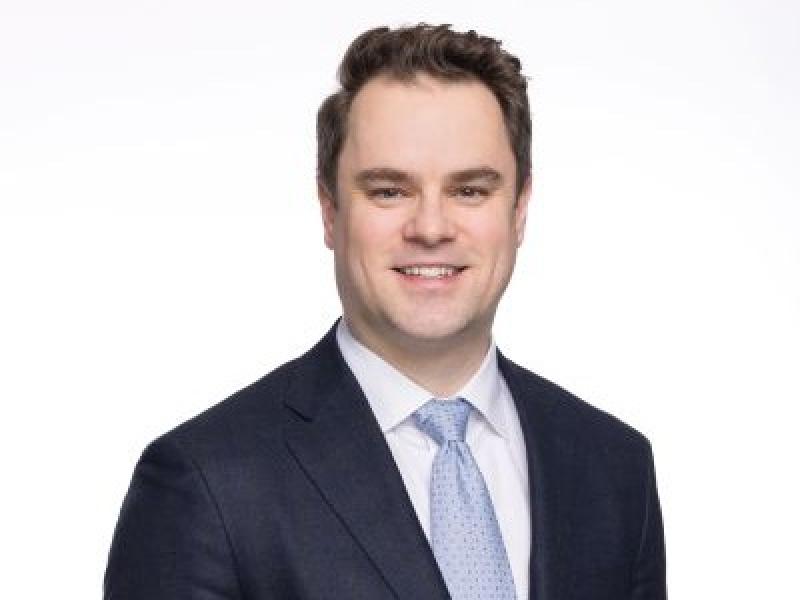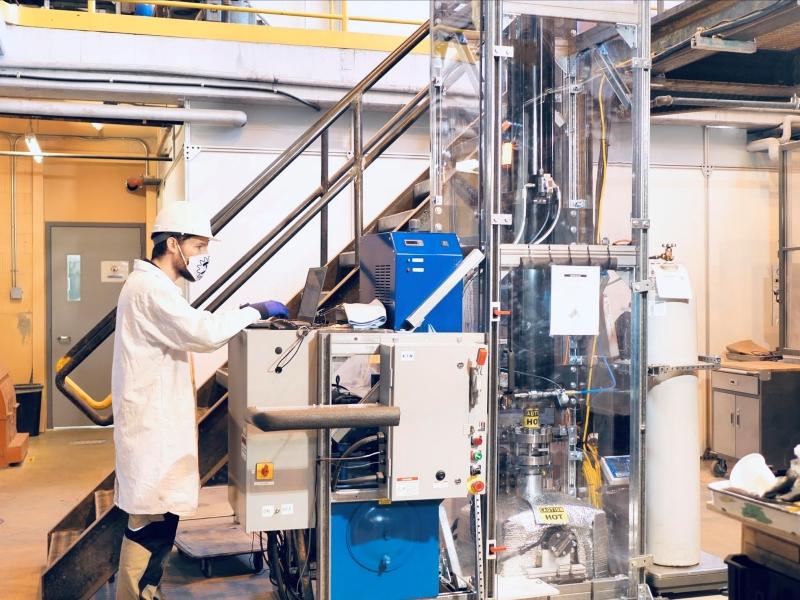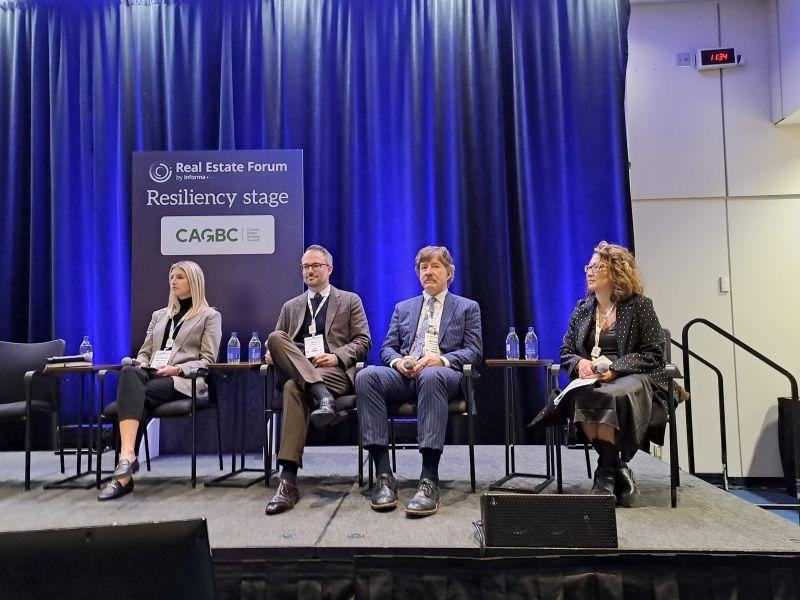
Sarah Farano, investment relations and finance manager for Equitable Bank, via Equitable Bank.
Equitable Bank says it has become the first Schedule I Canadian bank to quantify its entire Scope 3 greenhouse gas (GHG) emissions portfolio, reflecting its commitments to sustainability and transparency.
Sarah Farano, investor relations and finance manager for the bank, said the intent is to be a good steward for the Canadian environment and the communities surrounding it.
“We’ve tried to be really intentional about the actions that we’re taking and the measurements that we’re taking,” she said. “So when we were thinking about measuring our greenhouse gas emissions for the first time, we thought ‘why not do it all, so we can have a benchmark and then we can move forward from there.’
“Our purpose is to drive change in Canadian banking to enrich the lives of the Canadian people . . . We felt that in (the) environment, we can start off by measuring these emissions and then start figuring out ways to reduce them.
“That’s kind of the question of the century. How do we reduce these emissions? It’s taking advantage of our energy partners to see ways we can be innovative in reducing emissions. Maybe there’s partnerships we can leverage to reduce emissions with these fintech partners or work in technology to find creative ways to reduce emissions.”
Breaking down scope 3 emissions
As part of that commitment, Equitable also disclosed the Scope 3 GHG emissions which arise from its own operations as well as its $35.4-billion lending portfolio. Scope 3 calculations captured activities such as business travel, purchased goods and services, capital goods, waste generated in operations and employee commuting, as well as emissions from Equitable’s vehicle, mortgage and commercial real estate financing activities.
| Scope 3 Category 1 | 2020 GHG Emissions (tCO2e*) |
| Category 1: Purchased Goods and Services | 6,874 |
| Category 2: Capital Goods | 204 |
| Category 3: Fuel and Energy-Related Activities |
104 |
| Category 5: Waste in Operations | 8 |
| Category 6: Business Travel | 326 |
| Category 7: Employee Commuting | 461 |
| Category 15: Investment Emissions (i.e., Financed Emissions) | 531,734 |
| Total Scope 3 emissions | 539,711 |
(* Tonnes of carbon dioxide equivalent)
The bank’s report states the first quantification of Scope 3 emissions revealed most arise from its mortgage lending portfolio.
Equitable also quantified its Scope 1 and Scope 2 emissions, which were measured from the bank’s office locations and included such factors as electricity and heat. Farano said the bank has already become carbon neutral in these emissions.
The Scope 1 and Scope 2 GHG emissions resulting from operations were equal to 553 tonnes of carbon dioxide equivalent (tCO2e) in 2020, which Equitable offset through the purchase of Verified Carbon Standard (VCS) emission reduction credits for Darkwoods Forest Conservation, in collaboration with Natural Capital Partners, a leading provider of carbon neutrality and climate finance solutions.
She described the company’s Scope 1 and Scope 2 emissions as being “incredibly low” primarily because it is a digital bank without a bricks-and-mortar branch network.
“Our bank is in the cloud, which also reduces emissions,” said Farano. “So we haven’t put any formal reduction initiatives in place at this time for Scope 1 and 2, but we do things in the office like use reusable cutlery, we have a great waste program, reduction practices that were already in place.”
Incorporating the Scope 3 emissions recognizes the bank’s responsibility as a lender, Farano said.
“We are in some way responsible for the emissions that the value chain is creating so we’re trying to take accountability for that by measuring these Scope 3 emissions,” she said.
“Right now, we haven’t formally established any targets. We’re evaluating what makes the most sense. We want to be really intentional about what we come out with to the market. But the goal right now is what gets measured gets managed. So we want to measure these emissions so that going forward we can manage them down in the best way possible.”
The future of its emissions portfolio
For now, Equitable is not factoring emissions into its lending decisions.
“That could be something considered in the long term, but now we’re more focused on making sure that we get data from these borrowers, whether they’re taking on projects to make their home greener for example,” Farano said. “We’ll start taking information from our borrowers on initiatives like that.
“At some point it might affect lending decisions but that’s not something we’re considering (at this time).”
Equitable has been in business for just over 50 years. The head office is in Toronto with five satellite offices across the country. It is the eighth largest bank in Canada by market capitalization.
“We kind of challenge the big banks in that we offer niche products to people that are maybe under-served by the larger lenders,” Farano said. “We have a personal banking business that includes residential mortgage lending and deposit-taking through EQ Bank – our digital bank that we launched in 2016.
“On the commercial side of our business we do commercial lending as well in a lot of multi-unit residential properties. We do insured lending through CMHC (Canada Mortgage and Housing Corporation) in our commercial portfolio and we have a couple of other businesses in equipment leasing and specialized financing.”







